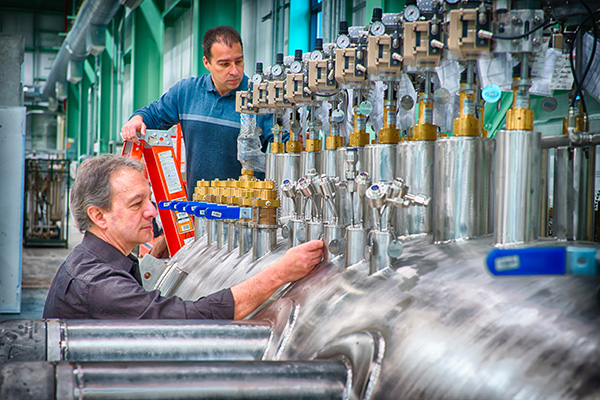OEE has remained a valuable metric over the decades, but methods for improving equipment effectiveness have changed and advanced over time.
The overall equipment effectiveness metric was coined in the 1970s and continues to be one of the most widely used metrics in manufacturing. OEE is calculated from three components:
OEE is certainly not the only metric manufacturing leaders should consider when determining the success of their organizations. They also need to look at a broader set of metrics to assess the full health of a business: metrics involving business operations, actual plant floor or facility operations, and asset performance or machine health, for example.

But OEE does play a critical role, and it’s still an important part of measuring productivity. On the operations side, for example, revenue is directly tied to the availability of machines at any given time to produce the goods that ultimately drive a company’s bottom line. Usually, the more efficient production is, the higher the revenue. Manufacturing leaders today must focus on the intersection of all these areas — that’s what’s driving business, and it’s all about increasing production volume while lowering costs.
However, manufacturing leaders must also consider that OEE was initially developed more than 40 years ago. Technology has advanced a lot since then.
While OEE has remained a valuable metric through the decades, methods for improving it have changed and advanced over time. Today, innovative technologies leading manufacturers from industry 3.0 practices to industry 4.0 efficiency enable new ways of tracking and acting upon machine health data. In turn, manufacturers can make well-informed decisions based on precise information to improve OEE and drive overall success in the following ways:
Time and innovation haven’t lowered the significance of OEE in manufacturing; they have just necessitated a change in how manufacturers think about, measure, and achieve equipment effectiveness. With the advanced tools available today, manufacturing leaders have more opportunity than ever to increase the effectiveness of their machines, improve production efficiency, and reduce downtime.

Artem Kroupenev is VP of Strategy at Augury, where he oversees product, market, innovation, and ecosystem strategy. He has over a decade of experience driving the adoption of disruptive technologies and has previously co-founded companies in the United States, Israel, and West Africa.
Scott Ellyson, CEO of East West Manufacturing, brings decades of global manufacturing and supply chain leadership to the conversation. In this episode, he shares practical insights on scaling operations, navigating complexity, and building resilient manufacturing networks in an increasingly connected world.